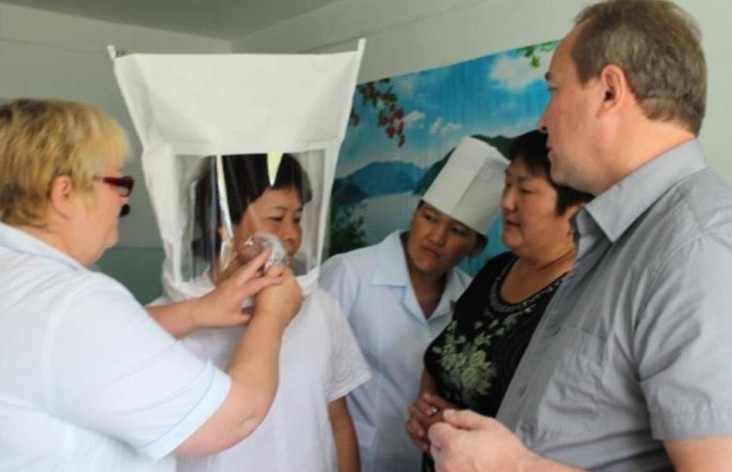
Feb. 2015—Despite increased investment in tuberculosis (TB) prevention and treatment over the last decade, the National TB Program and policymakers in Kyrgyzstan were not directing sufficient attention to infection control. The number of infections acquired by patients and health care workers in hospitals and other health care facilities was an indicator of the problem.
In 2011 alone, 42 health care workers contracted TB and, in 2012, the number of cases increased. Moreover, outdated regulations were contributing to delays in TB diagnosis and treatment. The seriousness of the situation finally forced Kyrgyz authorities to address long-overdue revisions to national infection control policies and practices, with assistance from the USAID-funded TB CARE I project.
Beginning in 2012, the TB CARE I project supported policy reform by assisting with the development of new National TB Infection Control Guidelines, which were adopted by the National TB Program. The guidelines are based on international standards, including World Health Organization recommendations.
In March 2013, TB CARE I assisted with the roll out of the guidelines through a pilot test at seven hospitals that provide TB treatment services in northern Kyrgyzstan. The objective was to improve hospital-based infection control practices. To ensure adherence to the new guidelines, staff at the seven hospitals, as well as selected staff from the Sanitary and Epidemiological Service of the Ministry of Health, received training and extensive on-the-job-supervision and mentoring in managerial, administrative, environmental and personal infection control measures.
Training was provided to health care personnel on the use of infection control-related equipment that was procured for the seven hospitals with funding from the United Nations Development Program, the Global Fund and TB CARE I.
After two years,the National TB Program and project partners have seen significant improvements in practical implementation of the new TB infection control measures at all seven hospitals. Interventions at the facilities have included timely diagnosis of TB, proper separation of resistant and susceptible TB patients, installation of secure sputum collection rooms, and improved individual protection practices for patients and health care workers.
A good example is the rehabilitation center in Jety Oguz, which provides long-term TB care. This facility was treating smear negative (less infectious) TB patients alongside smear positive (more infectious) multidrug-resistant TB patients, posing a high risk of infection for both staff and patients. The facility is now treating only smear negative patients. Other administrative and individual infection control measures, such as patients wearing surgical masks and health care workers wearing respirators, were adopted following training by TB CARE I.
At a TB hospital in Kara Balta, staff has seen positive results from similar measures to separate TB patients. Where once there were almost no protocols and TB patients received poor care, now TB screenings for health care workers have become routine. Sputum collection rooms have been set up on each floor, with sufficient mechanic ventilation and ultraviolet lamps to ensure that required infection control standards are followed. Food and medicine are now delivered to each ward, thereby cutting down on patient interactions and the risk of infection.
"As a manager and a doctor, I constantly think about ways to protect patients and staff from nosocomial [hospital-acquired] infection,” said Dr. Zamira Karasartova, director of Kara Balta Hospital. Karasartova’s advocacy efforts with the Ministry of Health have led to the allocation of $143,000 for the hospital to repair the water supply and sewers, reconstruct halls and wards, and install additional toilets and showers to allow for the proper separation of patients.
Even though the guidelines have been adopted by the Ministry of Health, they are still only recommendations. To make their use mandatory throughout Kyrgyzstan, TB CARE I supported the development of national infection control instructions—local regulations for maintaining effective IC practices. The Ministry of Health adopted the instructions in fall 2013, making it mandatory for all TB facilities to adopt the new practices.
This marked another important development in the modernization of infection control policy and practice in Kyrgyzstan, contributing to decreases in the transmission of TB from patient to patient and from patients to health care workers. In 2013, the number of TB cases among health care workers decreased by 43 percent compared to 2012.
The TB CARE I project in the Kyrgyz Republic was completed in January 2015.
LINKS







Comment
Make a general inquiry or suggest an improvement.